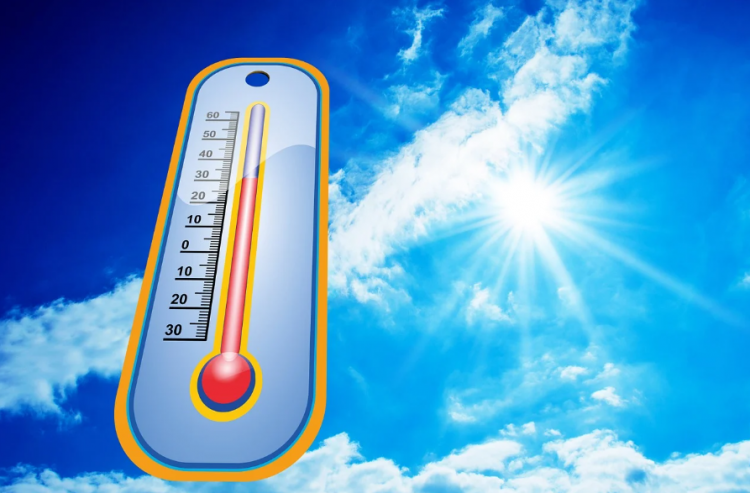A punishing heat wave is set to engulf the Midwest and East Coast this week, bringing record-breaking temperatures and oppressive humidity to over 150 million Americans. The extreme weather event, fueled by a powerful heat dome, is expected to last through Friday and beyond, prompting widespread heat alerts and raising concerns about heat-related illnesses, particularly among vulnerable populations.
As of Monday morning, nearly 72 million people across the United States were under some level of heat alert, according to the National Weather Service. Temperatures are expected to soar above 90 degrees for around 150 million people, with readings potentially exceeding 100 degrees for approximately 9 million individuals. Heat warnings, watches, and advisories span from Iowa to Maine, impacting major cities such as Detroit, Cleveland, Cincinnati, Pittsburgh, Philadelphia, Boston, and New York City.
The National Weather Service's Weather Prediction Center emphasized the exceptional duration of this heat wave, stating, "The duration of this heat wave is notable and potentially the longest experienced in decades for some locations." The intense conditions are being driven by a strong heat dome, which could cause temperatures to rise as much as 25 degrees above normal in many areas.
Record-breaking temperatures are anticipated in some 200 cities stretching from the Ohio Valley and the lower Great Lakes to the northern mid-Atlantic and the Northeast. The Pittsburgh branch of the NWS warned that this "could be the most impactful heat wave of the 21st century" for the Ohio River Valley. Meanwhile, the NWS' Phoenix branch reported temperatures reaching 112 degrees on Sunday, just 3 degrees shy of the record and 7 degrees above average.
The extreme heat is not only confined to the Midwest and East Coast; the Nevada Division of Emergency Management cautioned residents against relying solely on fans for cooling and urged them to seek air-conditioned spaces such as libraries, shopping malls, or the cooling centers that have been established across the Southwest in recent weeks.
In response to the looming heat wave, state and local authorities are taking proactive measures to protect their communities. New York Governor Kathy Hochul activated 50 members of the National Guard to bolster the state's response efforts. Elijah Hutchinson, the executive director of the Mayor's Office of Climate and Environmental Justice, emphasized the importance of collaboration between government and communities in safeguarding those most vulnerable to heat, including older adults, outdoor workers, unhoused individuals, and those with preexisting health conditions. New York City is set to open more than 500 cooling centers on Tuesday to provide relief for its residents.
The impending heat wave is also affecting educational institutions, with public schools in Buffalo, New York, implementing half days for four schooldays this week to allow pre-K through 8th graders to leave by the end of the lunch hour, minimizing their exposure to the extreme temperatures.
In addition to the scorching heat, some parts of the United States are expected to experience heavy rainfall this week. The National Weather Service has warned of the potential for flash flooding and severe thunderstorms in the Dakotas and Minnesota, while rain from the Gulf of Mexico is expected to impact parts of Texas and Louisiana, possibly through Wednesday.
As the heat wave intensifies, concerns about heat-related illnesses are mounting, particularly for the elderly, young children, and outdoor workers. Extreme heat is considered the deadliest form of severe weather, claiming on average twice as many lives annually as tornadoes and hurricanes combined.
Scientists have long warned that heat waves will become more frequent and severe as the climate crisis worsens. The European Union's Copernicus Climate Change Service has reported that each of the last 12 months has set a record for high temperatures, underscoring the urgent need for action to mitigate the impacts of climate change.






